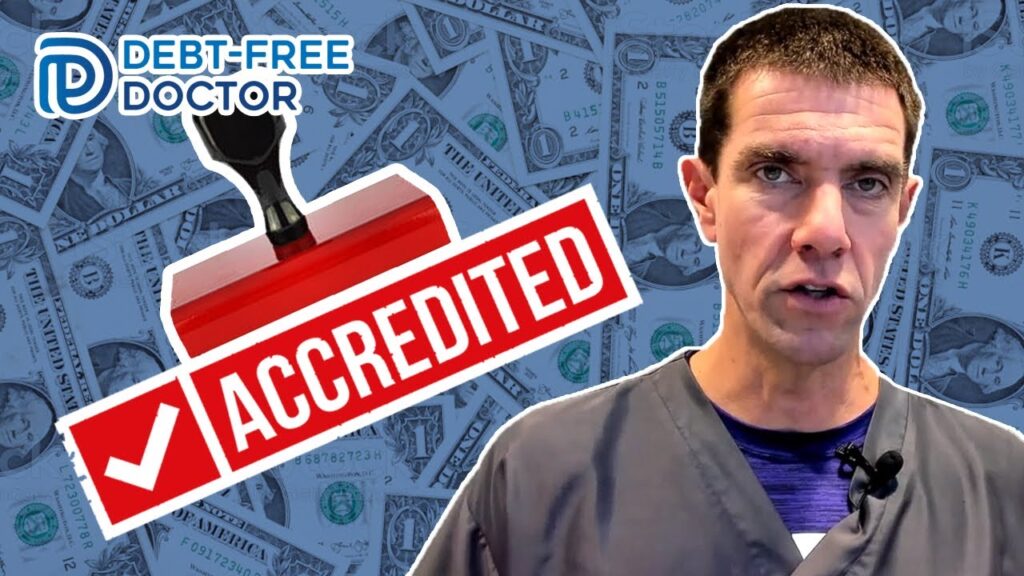506(b) vs 506(c) Syndication: What’s the Difference?
Are you interested in real estate syndications? When I first started, many of the deals offered either a 506(b) or 506(c). But at the time, I didn’t know what either involved.
Raising capital is critical to launching a private fund or a syndication. And these companies must be aware of the regulatory options available to them. Two popular methods for raising investment capital without registering their offering with the Securities and Exchange Commission (SEC) are Rules 506(b) and 506(c) of Regulation D. These provisions allow businesses flexibility in gathering funds while complying with securities laws.
The primary difference between Rule 506(b) and Rule 506(c) lies in the type of investors they cater to and the methods of advertising permitted. Rule 506(b) allows companies to sell securities to accredited investors without soliciting or advertising publicly, accepting investments from up to 35 non-accredited investors per financing round. Rule 506(c), on the other hand, permits general solicitation and advertisement but requires that all investors be accredited.
Understanding these distinctions is essential for companies seeking to raise capital and investors looking to participate in private placements. By carefully evaluating the rules and determining which option best suits their needs, both parties can make informed decisions to ensure a successful fundraising process.
What Are 506(b) Offerings?
Regulation D of the Securities Act is a set of rules that provide exemptions to the registration requirements of the Securities Act, allowing private companies to raise funds through private securities offerings.
One such exemption is Rule 506(b), which permits issuers to raise unlimited capital from accredited investors and up to 35 sophisticated investors. The main advantages of a 506(b) offering include maintaining a private offering status and avoiding public offering disclosure requirements.
Under this rule, general solicitation or advertising cannot be used to market the securities. Issuers must take reasonable steps to verify the accredited status of investors and comply with all federal securities laws, including anti-fraud provisions. The Securities and Exchange Commission (SEC) holds issuers accountable for ensuring compliance with these regulations.
In a nutshell, companies aren’t allowed to advertise a 506b offering publicly and must be able to demonstrate they have a substantial prior relationship with you before they make any investment offerings.
What Are 506(c) Offerings?
Rule 506(c) is another exemption under Regulation D, allowing issuers to solicit broadly and generally advertise their offerings but only to accredited investors. To qualify for this exemption, issuers must take reasonable steps to verify the accredited investor status of each potential purchaser. The verification process typically requires a higher level of due diligence compared to 506(b).
The primary advantage of Rule 506(c) is the ability to use general solicitation and advertising, which can potentially attract a larger audience of accredited investors. This increased exposure can reduce the time and effort required to raise capital.
To learn more about what an accredited investor is, check out this video:
3 Types of Investors
Here are the 3 types of investors to be aware of:
#1. Accredited Investors
Accredited investors are individuals or entities that meet specific financial criteria the SEC sets. These criteria include:
- Having an individual annual income of $200,000 or a combined income of $300,000 with a spouse for the past two years, and reasonable expectations of maintaining the same income level in the current year.
- Having a net worth over $1 million, excluding the primary residence.
Rule 506(b) and Rule 506(c) both allow issuers to raise unlimited capital from accredited investors. However, Rule 506(c) requires issuers to take reasonable steps to verify the accredited status of potential investors. Such steps may include reviewing brokerage and bank statements, tax returns, or obtaining written confirmation from a third-party professional (e.g., attorney or accountant).
#2. Non-Accredited Investors
Non-accredited investors are those who do not meet the financial requirements for accredited investors. Rule 506(b) allows issuers to accept investments from up to 35 non-accredited investors, provided they have a pre-existing and substantive relationship with the issuer. These investors must be sophisticated enough to understand the risks of the prospective investment.
Rule 506(c) does not permit investments from non-accredited investors, as it allows for the general solicitation of investors without any limitation on the number of accredited investors. Issuers raising capital under Rule 506(c) must ensure they only deal with accredited investors or risk violating SEC regulations.
#3. Sophisticated Investors
A sophisticated investor is an individual or entity with sufficient knowledge and experience in financial and business matters to evaluate the benefits and risks of a prospective investment. In Rule 506(b) offerings, this category usually covers non-accredited investors allowed to invest in the offering.
Rule 506(b) requires that sophisticated investors can evaluate the financial statements and understand the risks of the prospective investment without requiring a representative. The determination of an investor’s sophistication is typically made on a case-by-case basis, depending on the investor’s knowledge, experience, and the specific details of the securities offering.
Raising Capital and Offering Process
Sales of Securities
In the United States, private companies and smaller companies looking to raise capital can rely on the safe harbor provisions of Rule 506(b) and Rule 506(c) under Regulation D. These rules, established by the Securities and Exchange Commission (SEC), allow firms to raise investment capital without registering the offering with the federal government, simplifying the process for both investors and issuers.
Rule 506(b) offers a cost-effective and efficient way for private companies to raise capital. This rule allows raising unlimited funds from accredited investors and up to 35 non-accredited investors, provided the issuer does not engage in general solicitation or advertising. To ensure compliance with securities fraud prevention laws, companies using Rule 506(b) must file a Form D with the SEC.
On the other hand, Rule 506(c) permits issuers to engage in general solicitation and advertising through social media, their websites, and other platforms. However, only accredited investors are allowed to participate, and issuers must take reasonable steps to verify their accreditation status, such as reviewing tax returns or obtaining a written confirmation from a third party.
Real Estate Syndication
Real estate syndication is a typical application of Rule 506(b) and Rule 506(c) fundraising, allowing multiple investors to pool their resources and participate in larger real estate projects.
Real estate sponsors can use these rules to raise capital for both equity and debt securities offerings while avoiding the complex and time-consuming process of registering with the SEC.
In a Rule 506(b) real estate syndication, sponsors can accept investments from accredited and non-accredited investors but must avoid general solicitation. Due to the limitation on non-accredited investors, real estate sponsors often prefer to raise capital under Rule 506(c), which allows general solicitation and potentially attracts a larger pool of accredited investors.
Don’t Miss Any Updates. Each week I’ll send you advice on how to reach financial independence with passive income from real estate.
Sign up for my newsletterVerification and Compliance Requirements
Third-Party Verification Services
Under Rule 506(c) of Regulation D, issuers are required to take reasonable steps to verify the accredited investor status of purchasers. One common way to meet this requirement is by using third-party verification services, such as Verify Investor or Parallel Markets.
These services help issuers confirm potential investors’ income or net worth by reviewing their personal information and financial documents.
Legal Advice
Another aspect to consider when complying with Rules 506(b) and 506(c) is seeking legal advice. Issuers might obtain a letter from an investor’s lawyer or accountant verifying their accredited investor status.
This representation ensures that the solicitation and sale of securities are conducted according to Regulation D guidelines. Legal advice is crucial in navigating the differences between the two rules, such as allowing advertising under Rule 506(c) but prohibiting it under Rule 506(b).
Bad Actor Disqualification
Both Rule 506(b) and Rule 506(c) require issuers and associated parties, such as general partners and executive officers, to comply with the “bad actor” disqualification provisions under Regulation D. These provisions prohibit certain individuals who have been involved in fraudulent activities or violations of securities regulations from participating in exempt offerings. Issuers should conduct due diligence on their team and potential investors to ensure compliance with these disqualification provisions, thus avoiding potential penalties or SEC registration requirements.
Frequently Asked Questions
Can you change from 506(b) to 506(c)?
If an issuer initially conducts a private offering under Rule 506(b) but decides to switch to a Rule 506(c) offering instead, they can do so. However, they must ensure that all new investors in the offering are accredited and follow the verification requirements under Rule 506(c). Additionally, they should amend their Form D filings to accurately reflect the change in offering type.
What is a 506(c) offering?
A Rule 506(c) offering allows issuers to raise investment capital by advertising the offering to the general public. Issuers must take reasonable steps to verify the accredited investor status of all investors in the offering.
What is a Rule 506(b) offering?
Rule 506(b) is a private placement exemption from the SEC registration requirements, allowing issuers to raise unlimited capital from an unlimited number of accredited investors and up to 35 non-accredited investors. However, general solicitation and advertising are not permitted under Rule 506(b).
What are the 506(c) accredited investor verification process?
Under Rule 506(c), issuers must take reasonable steps to verify that all investors in the offering are accredited. This typically involves obtaining documentation, such as tax returns, bank statements, or credit reports, to demonstrate the investor’s income or net worth.
Join the Passive Investors Circle




